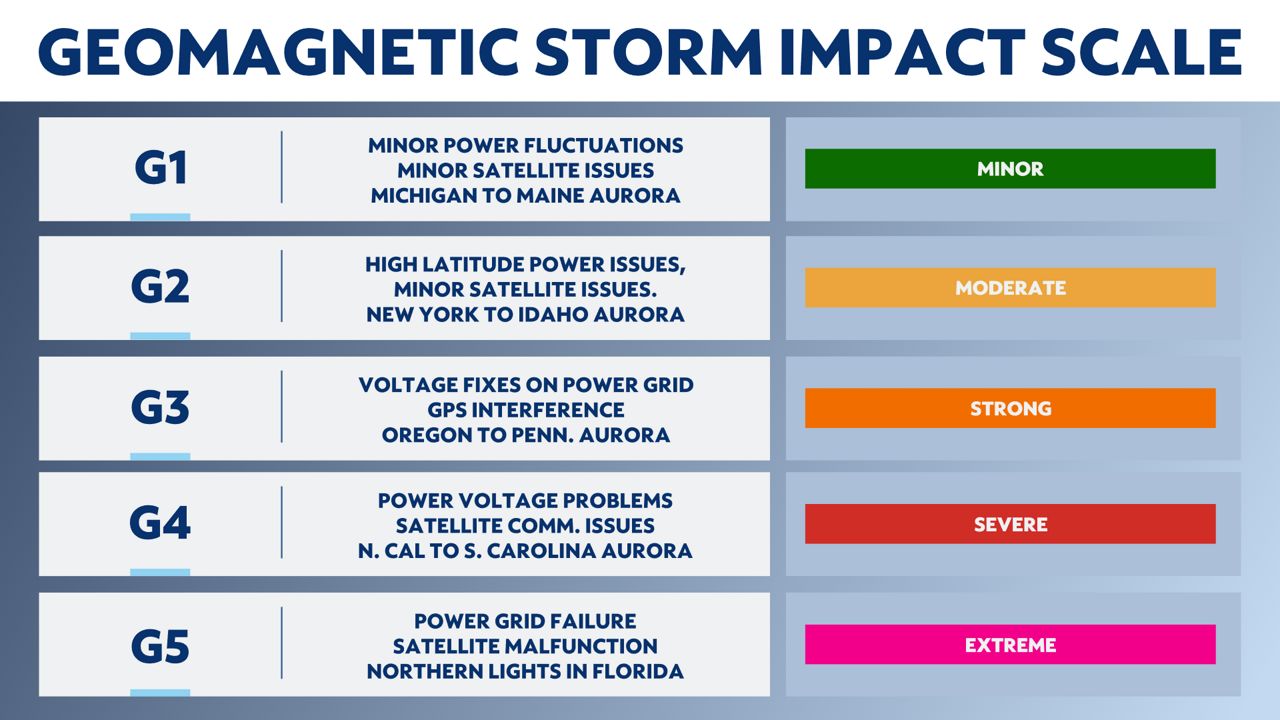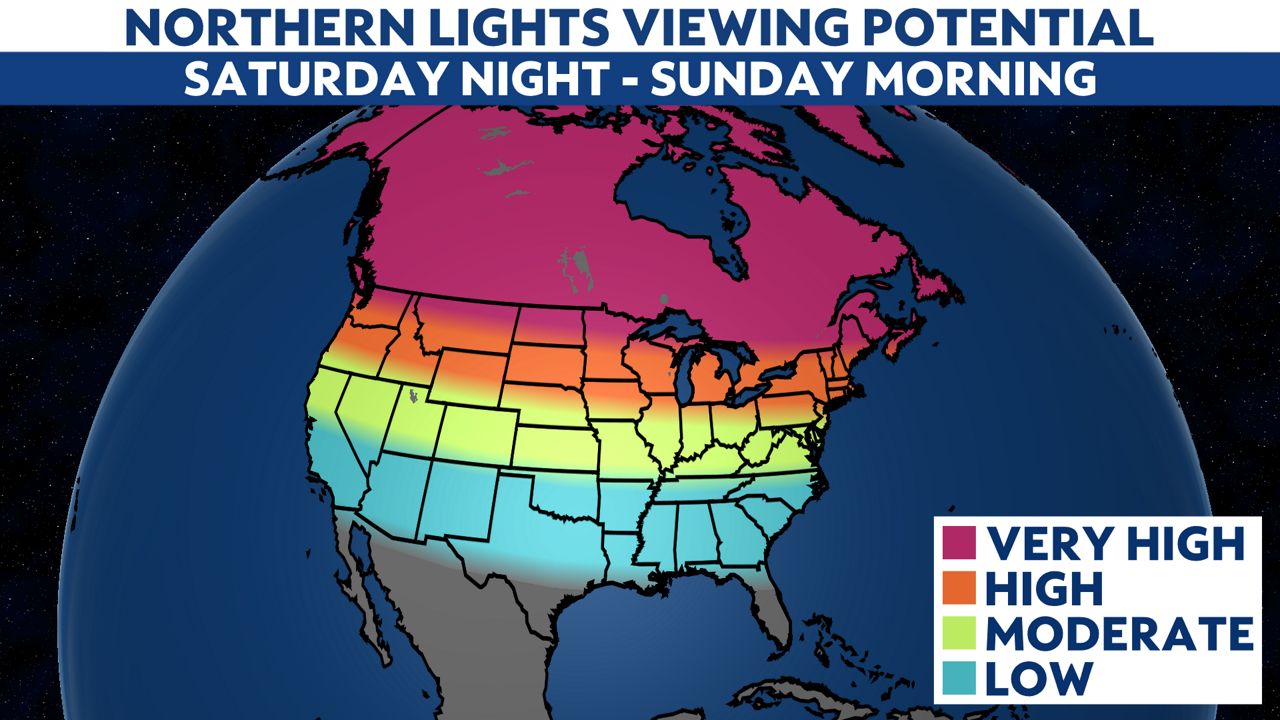Many across North Carolina were treated to a rare viewing of the Northern Lights on Friday night, and those who missed it may be wondering whether tonight will offer another chance.
For the first time since 2005, forecasters with the National Oceanic and Atmospheric Administration's Space Weather Prediction Center issued a Severe Geomagnetic Storm Watch due to solar activity.
Geomagnetic storms are rated on a scale from G1 to G5. G3 to G4 conditions have persisted through most of Saturday. A G5 period occurred early in the day.

A watch for G4 or greater conditions is still in effect through Sunday with a possibility that we see G3 conditions even into Monday. A few additional disturbances on the surface of the sun are expected to impact the Earth's upper atmosphere by Sunday.
These disturbances are called coronal mass ejections, or CMEs. These massive bubbles of plasma and magnetic field from the sun can be ejected and reach the Earth in a matter of hours.
Some of the preliminary reported impacts have included unexpected issues with the power grid, connection issues with communication devices that use high frequencies, and even disruption to GPS navigation.
The Northern Lights, also known as the aurora borealis, have been seen as far south as Florida and, weather permitting, the aurora will be visible over a large portion of the United States again tonight and Sunday night.
The historic geomagnetic storm continues... pic.twitter.com/LoMh0OomLu
— NOAA Space Weather Prediction Center (@NWSSWPC) May 11, 2024
Forecasters with the Space Weather Prediction Center are expecting the threat of additional CMEs to continue until the large and magnetically complex sunspot cluster rotates out of view, most likely by Tuesday.
Last night, many in North Carolina had to endure cloud cover to get a good view of the Northern Lights. Our meteorologist Scott Dean managed to capture a good shot from Clayton.
From Clayton! #Auroraborealis pic.twitter.com/PUknR64unS
— Meteorologist Scott Dean (@deanofweather) May 11, 2024
Tonight's view will also contend with cloud cover.
It looks as though clouds will be clearing out overnight and you will likely need to use the interactive radar tools with the satellite layer on our website in order to see where those clouds are before you make your plans.
.gif)
Best times are usually when it is darkest, so plan around the cloud cover first and shoot for viewing between 10 p.m. and 3 a.m. Sunday.
Look to the north and use your camera's long-exposure settings to get the best visual.
Most cameras and many smartphones are equipped with long exposure settings that allow you to capture as much light as possible.

This works best if you're away from light pollution, so go to rural areas if you can to get the darkest sky possible.
Be sure to share your weather photos with us if you're able to get a good shot!
Our team of meteorologists dives deep into the science of weather and breaks down timely weather data and information. To view more weather and climate stories, check out our weather blogs section.



)